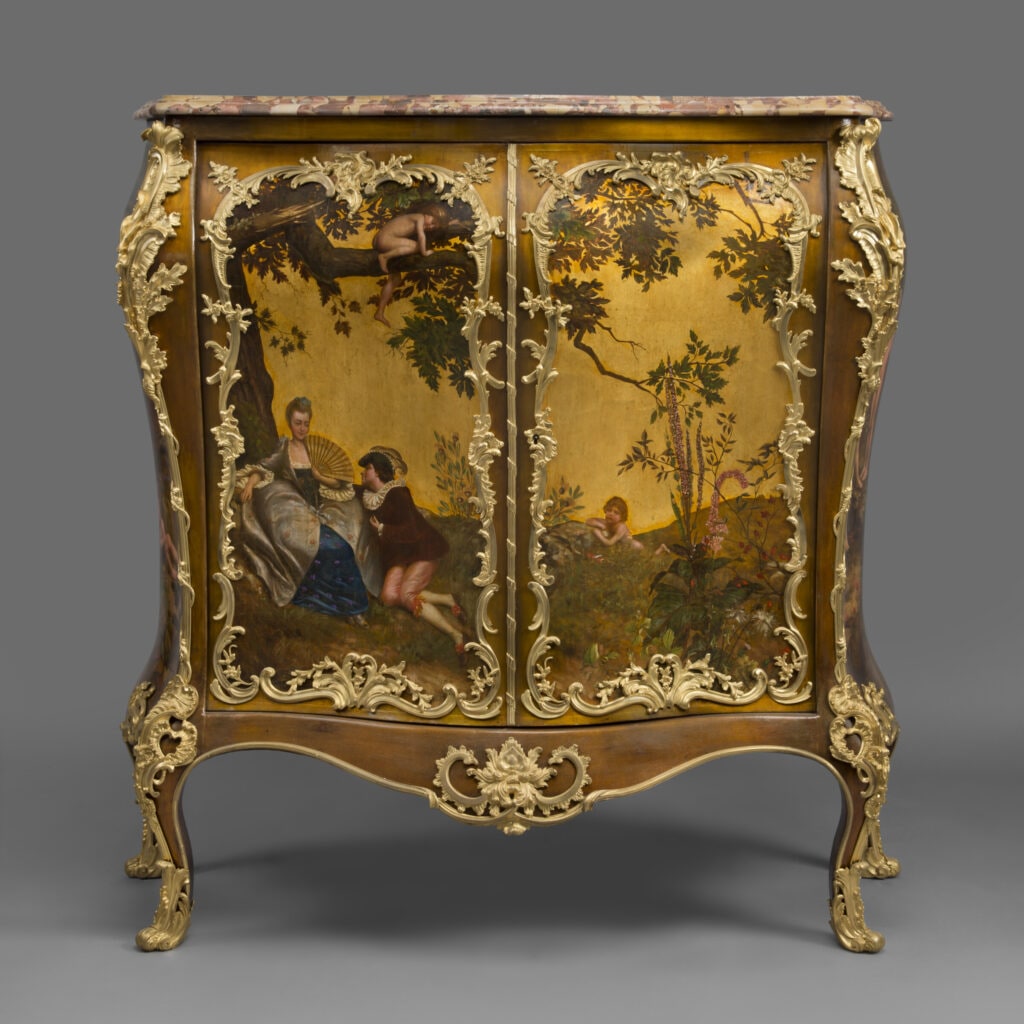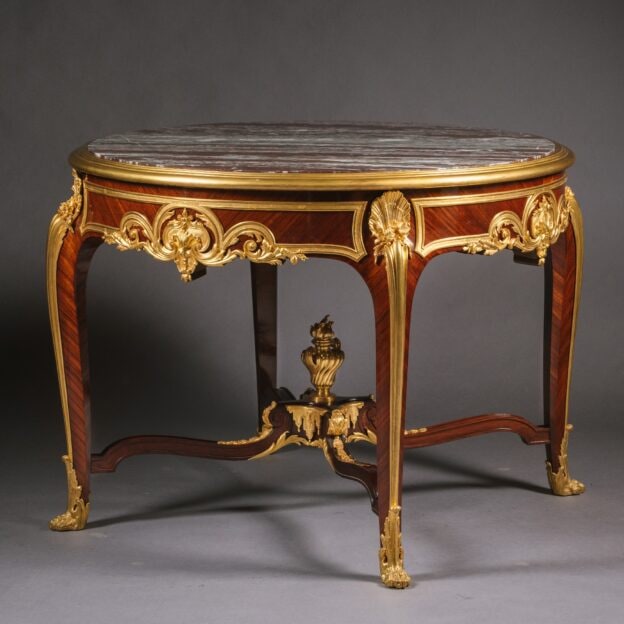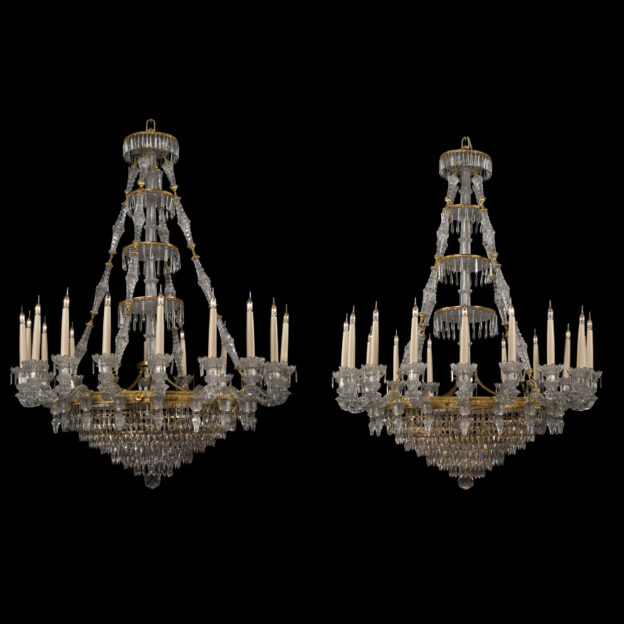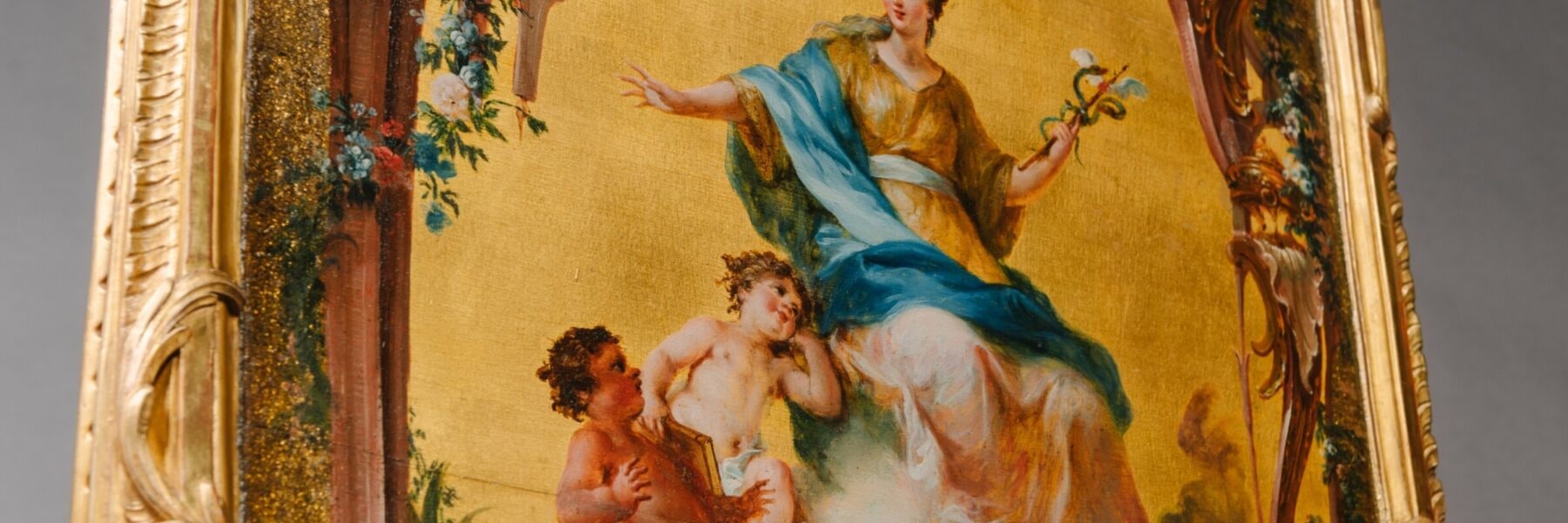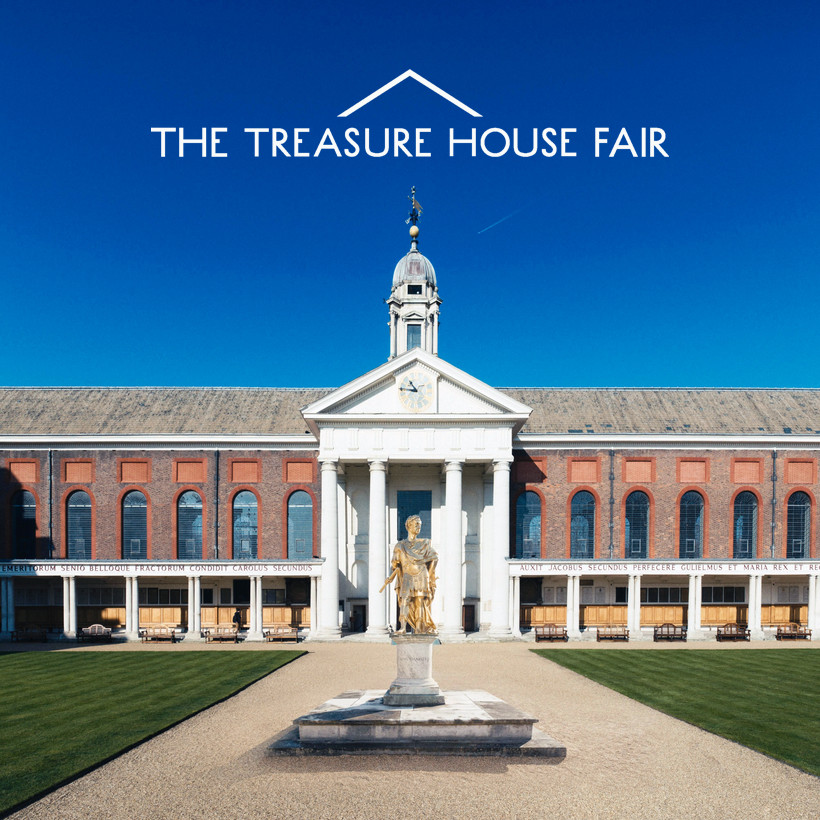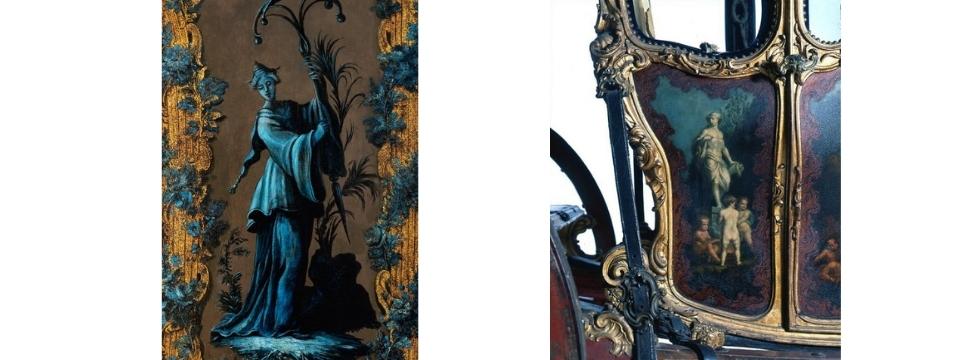
Sedan panel detail, Paris, attr. to Guillaume or Étienne-Simon Martin, around 1745
© Münster, Museum für Lackkunst
Berline de la maison du Roi (détail), anonyme, Paris, vers 1760
Bois sculpté et doré, laques noire, rouge, peinture à l’huile vernie polie, laque aventurine, laque transparente.
Intérieur garni de velours bleu brodé d’or, taffetas bleu, cuir, verre et métal.
Lisbonne, Museu Nacional dos coches
© DR, Museum für Lackkunst
Vernis Martin was developed from a varnish called cipolin. It is remarkably lustrous and fine in texture and produces an array of colours ranging from greys, greens and blues and enhanced by gold dust beneath the surface producing a sparkling finish. This lengthy process requires the application of as many as forty layers to be applied to the surface, each of which is then polished to result in the required depth and finish.
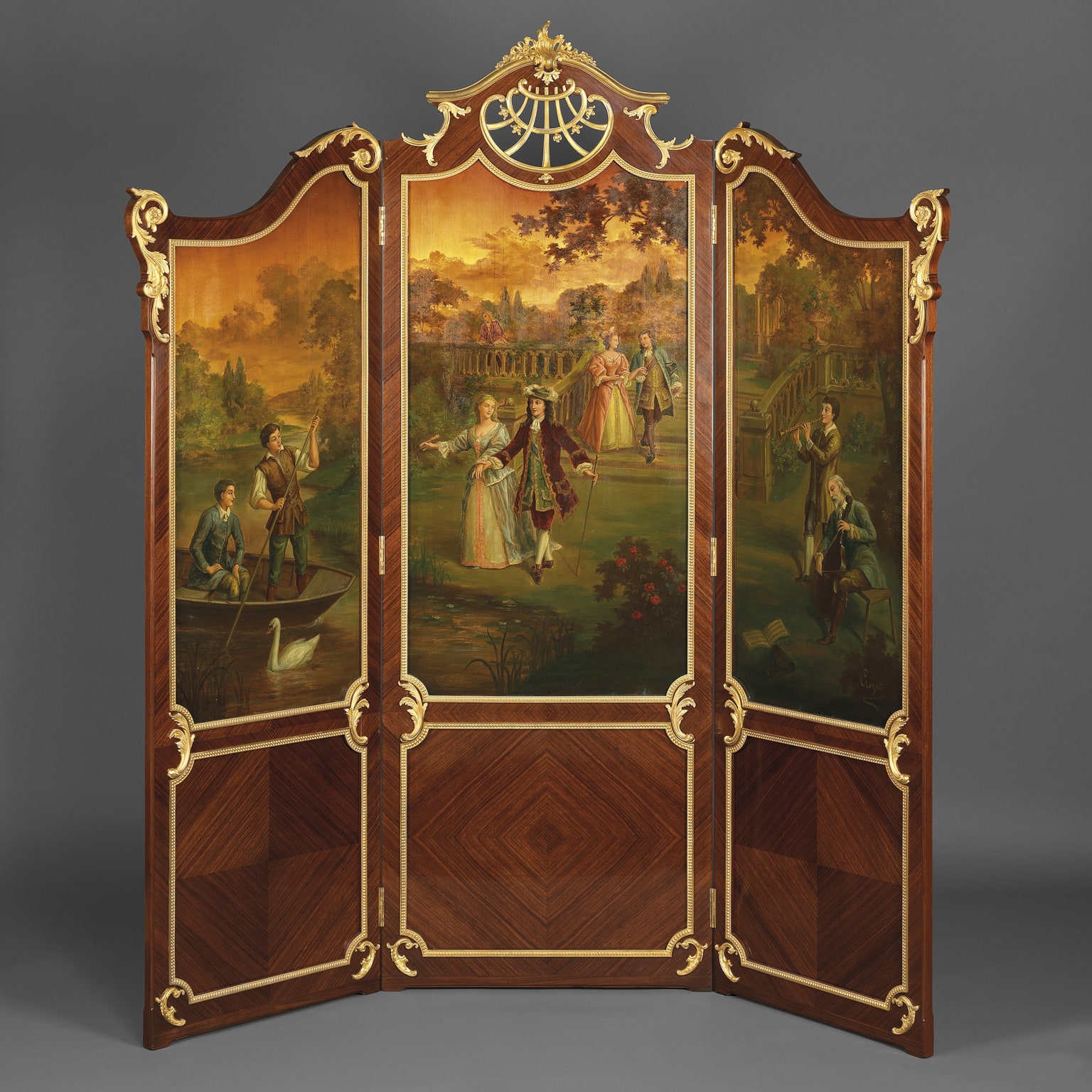
A Louis XV Style Side Vernis Martin Painted Cabinet by Maison Millet. © Adrian Alan Ltd
The Martin brothers not only reproduced and repaired East-Asian lacquer, but adapted the technique to the current styles in France, creating japanned panelling in the apartments of the Dauphine at Versailles (1748–9), and in the Château de Bellevue and the Hôtel d’Ormesson for Mme de Pompadour (1721–64).
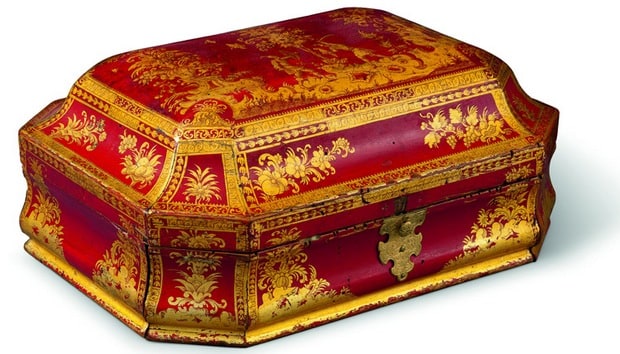
Toilette carrée en tombeau, anonyme, France, vers 1720
Bois, laque rouge, décor à la feuille d’or gravée, laque transparente, à l’intérieur laque noire, laque transparente avec particules métalliques, cuivre doré et gravé.
H. 13 cm, L. 31 cm, l. 22 cm.
Münster, Museum für Lackkunst
© DR
They also lacquered such European forms as carriages, sedan chairs, furniture, and smaller items such as fans, toilet accessories, étuis and snuff-boxes. The marchand-mercier Lazare Duvaux (?1703–58) commissioned many items of furniture from Etienne-Simon Martin between 1755 and 1759, among them a mirror frame with gold and aventurine lacquer.
